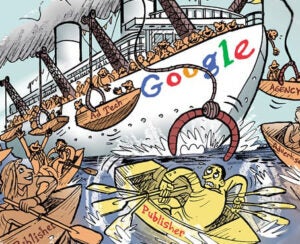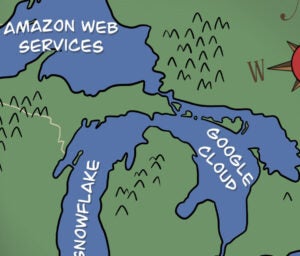 When Comcast’s ad sales division Spotlight revealed a partner deal with Rubicon Project earlier this month, it underscored the multiple system operator’s (MSO) push to power the TV buy through both programmatic and direct sales channels.
When Comcast’s ad sales division Spotlight revealed a partner deal with Rubicon Project earlier this month, it underscored the multiple system operator’s (MSO) push to power the TV buy through both programmatic and direct sales channels.
It was a pivotal moment for Comcast. Digital advertisers for the first time could buy against 19 million subscribers across the desktop sites of Comcast’s Xfinity and Xfinity.TV brand. Although this does not yet include mobile programmatic sales, the cross-screen “TV Everywhere” evolution will only propagate it.
While this helps broadcast networks further automate TV ad buys, there are still hurdles the broadcast networks need to address on their side. Adam Gerber, VP of sales development and marketing for ABC Television, pointed out barriers to total automation ABC has experienced: “We still send faxes and emails back and forth for linear TV deals… there’s still an MVPD in the middle who controls access to the home.”
And while the Comcast-Rubicon deal makes the case for “the continuing growth of programmatic,” Jim Nail, principal analyst at Forrester Research, noted questions about Comcast’s reach.
There “are probably some geographic skews to their cable areas and I’m sure you can buy certain areas of their sites for context, [but] it seems to me selling the audience has to be more valuable…assuming that they tie the cookie to the address of the subscribing household, they can do great audience targeting,” Nail stated.
Comcast could feasibly exceed and capitalize on its present cable subscriber base through its pending merger with Time Warner Cable.
Time Warner Cable Media, during its recent Digital NewFront, rolled out cross-screen audience-targeting tool Audience Select and “TV Tribes,” local audience segments designed to drill deeper than demo or affinity data. These include addressable, hyper-local segments, such as “health-conscious, chief household officers.”
Sean Coar, group VP of strategy and business decisions at TWC Media, said that the “billions of records” TWC collects every day (he also noted its strategy begins with privacy, first) are “just bits (and pieces) until you have the platforms and partners to make sense of it. Our multi-screen audiences are an attractive base for advertisers (and we’ve) invested millions of dollars in algorithms and platforms [to find these]” audiences,” he said. “We’re at a point now where we are truly digital. Audiences, content and data are converging fast.”
While digital, exchange-based media promises reach, advertisers want to access valuable linear television inventory and add hyper-targeted audience data to those buys. Comcast could further strengthen its offering by marrying subscriber segments with TWC Media, content via NBCUniversal programming and digital display via Rubicon. This “probably accelerates their momentum,” Nail noted.












